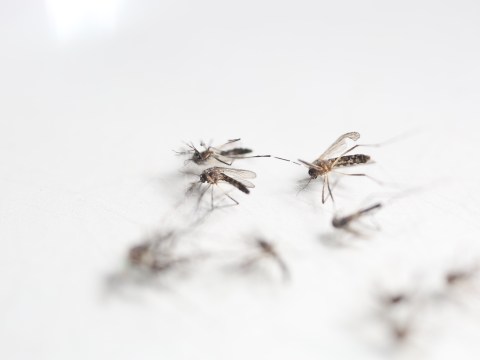A new study has found that urban expansion may have contributed to a rise in cases of a dangerous soil-borne disease in the Far North.

Melioidosis is a potentially fatal bacterial disease that is found in groundwater and soil, with outbreaks documented following extreme weather events.
The disease occurs when skin abrasions or wounds come into contact with wet soil or water contaminated by the bacteria Burkholderia pseudomallei.
It is very uncommon in healthy adults, and rarely seen in children, but does occur in people with diabetes, kidney problems, lung problems and people on medication that lowers their immune system. People who drink too much alcohol are also prone to the infection.
Cairns Hospital has recorded nearly 400 cases of melioidosis in the past two decades, with more than double the amount of cases in the last few years that would typically occur in Far North Queensland.
There were 48 cases of the illness recorded at the hospital in 2020, and 49 cases so far this year.
Dr Simon Smith, an infectious diseases physician at the Cairns and Hinterland Hospital and Health Service, led a team that examined 297 of the cases, to help determine their cause.
The research team looked at local climatic factors including rainfall, temperatures, cloud cover, dew points and even cyclones.
During January 1998–December 2019, the annual incidence of melioidosis in Far North Queensland, Queensland, Australia, more than doubled. Because climate and prevalence of predisposing medical conditions remained stable during that time, we hypothesize that the increased incidence was caused by urban expansion and increased construction, resulting in greater exposure to Burkholderia pseudomallei.
Increased Incidence of Melioidosis in Far North Queensland, Queensland, Australia, 1998–2019
Simon Smith , Peter Horne, Sally Rubenach, Richard Gair, James Stewart, Lee Fairhead, and Josh Hanson
Dr Smith said while increased cases of melioidosis were usually associated with cyclone activity, there had only been one cyclone within 200km of the study area during the 20-year period.
However, he said they did find a link between the construction of a new motorway south of Cairns, and the rise in infections.
‘Before the expansion of the southern motorway in Cairns in 2011, there was only one case of melioidosis that occurred within 1km of the existing road, and two cases within 2km,’ he said.
‘However, after the road construction started in 2011, 15 cases occurred within 1km of the highway and 27 occurred within 2km.’
‘The motorway was also built predominantly through alluvial plain soils, with moderate clay content and poor drainage – typical for our region – which favours growth of the bacteria that causes melioidosis.’
He said while only three patients infected with melioidosis reported being employed in the construction industry, the study highlighted the dangers of working and gardening in soil and muddy environments in the tropics.
‘The roadway was necessary to support the rapidly growing population of Cairns’ southern corridor,’ he said.
‘The biggest lesson to learn from this project, is that anyone working in soil or muddy water – particularly after heavy rains – should wear footwear and use gloves while working outdoors.’
‘This is especially important for anyone with certain underlying diseases and conditions like diabetes, chronic lung or kidney disease, and cancer.’
‘Any open wounds, lesions or burns should be protected from coming into contact with potentially contaminated soil or water, through the use of waterproof dressings.’
Symptoms of melioidosis include fever, cough and difficulty breathing; the effects can be very severe and almost always result in hospitalisation.
Sometimes the disease may present as superficial skin infections or abscesses in various part of the body.
Cairns and Hinterland Hospital and Health Service





